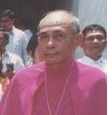GREGORIO L. AGLIPAY, THE UNSUNG HERO
On August 23, 1996, the Filipino people will celebrate the Centennial of the 1896 Philippine Revolution, waged in search for justice and freedom from foreign domination. In moments like this, we always remember Andres Bonifacio and Emilio Aguinaldo for leading the political and social aspects of the revolution. However, our celebration will never be complete unless we give justice to another pillar of the revolution and unsung hero.
To students of history, he deserves to be placed side by side with Bonifacio and Aguinaldo. He must be counted, as Renato Constantino puts it, “not only as Batac’s single contribution to our pantheon of national hereos but as a shining example of relevance in the continuing nationalist struggle.” This man is nor other than Gregorio Aglipay y Labayan. He was a leader of another aspect of the revolution, the religious revolution in thePhilippines.
At this point, a short outline of Aglipay’s early life up to the time of his separation fromRomeis in order.
Aglipay was born of poor parents in the town of Batac, Ilocos Norte, on May 8, 1860. His mother died when he was just one year old. At the age of 16, he left forManilaafter he was arrested for failing to plant tobacco on time. Aglipay’s struggle for life with justice and freedom of the oppressed and deprived Filipino began with the joys and pains of growing up in Batac. InManila, he enrolled at San Juan de Letran as a working student but making excellent grades. He was later admitted into theUniversityofSanto Tomas, and obtained a Bachelor of Arts degree. Afterwards, he thought of taking up law but changed his mind and entered the seminary in Vigan in 1883.


